Fur Industry in Detroit
A HISTORY of the FUR INDUSTRY in DETROIT
FASHION DICTATES and FORTUNE FOLLOWS
 Someone once remarked that Detroit was founded so that King Louis XIV of France could wear a beaver hat. That is a little far fetched, but, like so many glib statements, there is a grain of truth in it. While the world trade in peltry is no small business today, it in no way exerts the powerful influence that it did in the 17th and 18th centuries. French aristocrats and the more affluent members of the middle class wore furs. Because France had become the fashion center of Europe under Louis XIV, the wearing of furs spread to other European countries. Of special importance in creating demand was the vogue for the broad brimmed beaver hat in the 17th century. King Louis wore one, and it became the “in” thing to wear. Europe, especially Poland, had been able to meet the demand for furs, but eventually the harvest of peltries ran short. The major asset that New France and Canada had to offer the mother country were it’s furs. Consequently, the furs New France and Canada had to offer the mother country was their major asset.
Someone once remarked that Detroit was founded so that King Louis XIV of France could wear a beaver hat. That is a little far fetched, but, like so many glib statements, there is a grain of truth in it. While the world trade in peltry is no small business today, it in no way exerts the powerful influence that it did in the 17th and 18th centuries. French aristocrats and the more affluent members of the middle class wore furs. Because France had become the fashion center of Europe under Louis XIV, the wearing of furs spread to other European countries. Of special importance in creating demand was the vogue for the broad brimmed beaver hat in the 17th century. King Louis wore one, and it became the “in” thing to wear. Europe, especially Poland, had been able to meet the demand for furs, but eventually the harvest of peltries ran short. The major asset that New France and Canada had to offer the mother country were it’s furs. Consequently, the furs New France and Canada had to offer the mother country was their major asset.
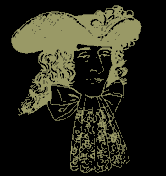
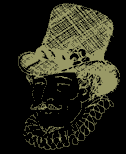
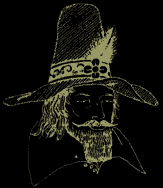

A STRATEGIC LOCATION
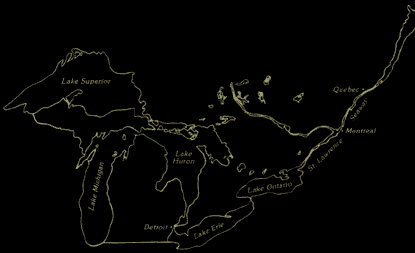 The Beginning of Detroit It began on the morning of July 24, 1701 when Antoine Laumet de La Mothe, sieur de Cadillac, along with a party of fifty soldiers, fifty traders and artisans, and two priests turned their twenty-five large canoes from midstream and headed toward the south bank of the river. The site Cadillac chose for his settlement was at a point where the river was most narrow and the high banks made it most defensible.
The Beginning of Detroit It began on the morning of July 24, 1701 when Antoine Laumet de La Mothe, sieur de Cadillac, along with a party of fifty soldiers, fifty traders and artisans, and two priests turned their twenty-five large canoes from midstream and headed toward the south bank of the river. The site Cadillac chose for his settlement was at a point where the river was most narrow and the high banks made it most defensible.
The city of Detroit was founded as a French outpost to control the rich fur trade in what is now known as Michigan and the Old Northwest; this outpost also prevented the British from encroaching upon the area (Woodford, 1974).
The river connected Lake St. Clair to the north with Lake Erie to the south. It was a frequently traveled waterway and early French Travelers had come to know the region well and had given it a name. The called it the Strait, or in their own tongue, “le Detroit”.
FUR and the FRENCH – The 1600’s
France’s claim to Canada and neighboring areas dates back to 1535 when Jacques Cartier discovered the St. Lawrence River and sailed to the site of what is now Montreal. In 1608 Samuel de Champlain arrived as governor, and settlement began. Many of those first immigrants found the fur trade an easier and more profitable existence than the drudgery of farming. To control the trade, a string of outposts was established, some where missionaries had already settled. Years before Detroit was founded, several of these forts, or trading posts, were flourishing in Michigan: Sault Ste. Marie (1668), Fort de Baude at St. Ignace (1686), Fort St. Joseph – where Port Huron is now (1686), one in St. Joseph (1679), and one in Niles (1691).
Within a few years, this system to control the fur trade through government outposts began to break down. More and more, the independent trappers were dealing outside the governmental controls. The result was a flood of furs sent to Montreal. The price of beaver dropped so low that the warehouses were full of skins that simply lay in storage and rotted because it did not pay to send them to France.
At the same time, the Jesuit missionaries were pressuring the government in France to close the outposts because, in many cases, the Indians were being cheated out of their furs. The traders at the outposts were shamelessly and without restraint using brandy as their chief item of exchange. As a result, in 1696, the French government closed the outposts and decreed that all furs had to be traded at Montreal. Only the Jesuits were allowed to maintain their settlements in Indian country.
Unfortunately for the French, this plan was not successful. The Indians, feeling no particular loyalty to the French, began to trade with the English who were beginning to find the fur trade a profitable endeavor.
Cadillac eventually developed a plan that would allow for a more controlled fur trade and remain personally profitable. His plan was to stop treating the Old Northwest (at that time anything between Lake Michigan and Montreal) as only a trapping area and to plant a genuine colony at a strategic location. Cadillac went to France to present King Louis and his chief counselor, Count Pontchartrain, with his plan for a new colony. This colony would include farmers and artisans, a village of homes, and the means to encourage the Indians (the chief providers of the furs) to establish their villages nearby the colonists. The King and the Count were enthusiastic. Cadillac named the fort, which was part of the new settlement, after his sponsor: the Count Pontchartrain.
Cadillac at once paved off the limits of his planned village between the Detroit River and the small Savoyard River in the rear. (The Savoyard River became part of the Detroit sewer system and lost its place as a river in the early 1800’s.) Cadillac marked the corners of his stockade, and, within two hours of landing, the men were in the nearby woods, felling trees for construction.
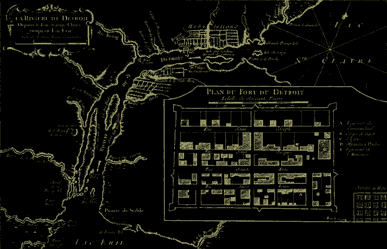
The next few weeks were spent clearing the land and building the fort. The stockade, which would enclose the settlement, consisted of a wall of twenty foot logs, embedded four-feet-deep in the ground. A blockhouse was set at each corner, and a moat was dug outside the wall. There were two gates: a large one with river access and a small gate in the east wall. Ste. Anne Street paralleled the River along the top of the bluff. Another shorter street was located above Ste. Anne. Two north-south streets were the only other streets in the village.
The original house lots were no longer than twenty-five feet wide and twenty-five feet deep. The houses were made of small oak logs, chinked with grass and mud and roofed with bark slabs. A large warehouse was also built for storage of public property and furs and for use as a trading store. The total area of the new village was about the size of one of today’s city blocks.
In September 1701, two months later, Madame Cadillac and Madame Tonty, the wife of Cadillac’s second-in-command, arrived in Detroit from Montreal. Cadillac wanted to convince the Indians that Detroit was intended to be a permanent settlement. The presence of wives made it more so.
As far as the fur trade was concerned, the settlement was a success from the beginning. Before long, Cadillac reported that 2000 Indians had set up their living quarters in the area, and others were coming in to trade their furs. The pelts that were shipped from Fort Pontcartrain of Detroit included bear, elk, dear, marten, raccoon, mink, lynx, muskrat, opossum, wolf, fox and, of course, beaver. Within a rather short time, Detroit was established as the center of the Great Lakes fur trade.
For nearly sixty years after Cadillac’s founding, the village remained French. Life was eventful, and the fur trade flourished.
While the fur traders traded, the formers began to grow crops and to cultivate orchards of apples and pears. Farm grants were given, and some of those earliest tillers are even still known to us today: Beaubien, Riopelle, St. Aubin, Chene, Campau and Livernois. The houses improved as time went on. Transformed from rough logs, they were clapboarded, painted white, and enclosed with picket fences. Their yards contained bake ovens, smoke houses, and open cooking areas.
FUR and the INDIANS
Culture Shock
Based on economic activity, the origin and development of the North American fur trade can be attributed to the interaction of three interlocking factors. The first key factor is a bountiful supply of prime furs, which only a relatively virgin continent with cold winters and numerous waterways could furnish. An indigenous and highly motivated fur-gathering system is another key factor, an economic force the native tribes provided through their seemingly insatiable appetite for European goods. The final ingredient was a continuing external demand for the products of the fur trade, an economic force that only a relatively affluent and fashion-minded society such as Europe could furnish with its increasing consumption and growing export trade (Bolus, 1972).
The first settlers to the New World found the native tribes very willing trade partners. Tools, trinkets, and clothing were readily traded for furs. As the fur trade flourished, so did the fortune of the Indians. Goods produced both in Europe and North America became easily available in exchange for furs.
In order to satisfy the needs of the Indians, the traders had to stock a large variety of items. These were the articles most frequently in demand: strouds (blankets) of blue, black, and scarlet; heavy napped woolen cloth and cotton for stockings; worsted and yarn hose; flowered serges of a variety of colors; calicos and calamancos (a glossy woolen fabric) for gowns; ribbons of all sorts; linen for shirts and readymade shirts; threads, needles, and awls; clasp knives and scalping knives; vermilion and verdigris for body painting; Jew’s harp’s, and hawk bells; stone and plain rings; silver gorgets, trinkets, small beads, and brass wire; toiletry items such as horn combs, scissors, razors, and hand mirrors; brass and tin kettles; tobacco, pipes, and snuff boxes; tomahawks and small hatchets; black and white wampum; red leather trunks, pewter spoons, and gilt cups; powder, flints, lead, duck shot, and muskets; beaver and fox traps; iron fish spears; and, of course, rum (Hamil, 1951).
Unfortunately, some traders proved to be unscrupulous. Not only were native tribes cheated in the value of their furs, they were often offered brandy or rum as payment. Brandy was a chief trade item, and the native tribes soon wanted more. An entire winter’s trapping would be used to pay for a few nights of revelry.
When the French government tried to stop this abuse by requiring the Indians to deliver their furs to Montreal for payment, the Indians began to trade with the English, who were more than happy to obtain these large amounts of fur
The ADVENTURERS
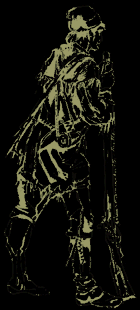 The “coureurs de bois” were the picturesque figures of the pioneer fur trade; these were the unlicensed, lawless traders of the woods. They were either French or half-breeds who went into the wilderness to barter with the Indian, adopted his customs, his way of life, and married his daughters. They were men who could paddle, hunt trap, and speak the native tribe’s tongue as well as the native himself. These traders were lighthearted, carefree, sturdy, rough, and independent. They were a strange mixture of civilization and savagery, believing the furred animals of the forest belonged to neither king nor company; hence, they defied all law. The “coureurs de bois” were the lone wolf entrepreneur who spent the winter in the woods and came out again in the spring with their canoe loaded with furs.
The “coureurs de bois” were the picturesque figures of the pioneer fur trade; these were the unlicensed, lawless traders of the woods. They were either French or half-breeds who went into the wilderness to barter with the Indian, adopted his customs, his way of life, and married his daughters. They were men who could paddle, hunt trap, and speak the native tribe’s tongue as well as the native himself. These traders were lighthearted, carefree, sturdy, rough, and independent. They were a strange mixture of civilization and savagery, believing the furred animals of the forest belonged to neither king nor company; hence, they defied all law. The “coureurs de bois” were the lone wolf entrepreneur who spent the winter in the woods and came out again in the spring with their canoe loaded with furs.
The other group, the voyageurs, were boatmen. Seemingly tireless at the paddles of a canoe, they would drive their frail craft upstream for hours on end, keeping time with their strokes to the lilt of a lively song. The largest canoes were of birch bark, thirty-three feet long and four and a half feet wide. They could carry a load of four tons, including the weight of eight paddlemen. With a rocky reach of furs or merchandise onto their backs, they trotted along the portage path to a place where the canoe could be launched again.
While both coureurs de bois and voyageurs were essential to the fur trade, they were nuisances in the settlements. Drinking, brawling, and swaggering along the streets, always ready for a fight, they frightened the peaceful habitants, who were greatly relieved when they set out again for the north country in the fall (Woodford, 1974).
FUR and the ENGLISH – The 1700’s
 For nearly six decades, Detroit was under rule, but, as a result of the French and Indian War, the town became a British possession in the fall of 1760.
For nearly six decades, Detroit was under rule, but, as a result of the French and Indian War, the town became a British possession in the fall of 1760.
Early in the spring of 1761, English traders began to arrive at Detroit. The English preferred a more organized approach to trade than did the French. Included in these new regulations was a list of prices for furs. Not only was the cost of trade goods in pelts significant to the Indians and traders, but the relative value of particular kinds of furs was important as well. Detroiters turned to a very local commodity: the beaver pelt. For the next forty years the prices for goods in Detroit were quoted in terms of beavers or bucks a buck was a buckskin, the hide of one large, prime, male deer. The British decreed that one beaver pelt was worth one good buckskin or one small buckskin and one doeskin. One small beaver was worth one marten or two raccoons, while one large beaver might be worth as much as six raccoons
With the beaver or the buck (from which evolved the American slang term for a dollar) as the basic medium of exchange, a whole list of prices was set on various commodities; a large blanket could be purchased for three beavers and a small striped blanket for two beavers. An ordinary man’s shirt was given a valuation of one beaver, and a ruffled shirt was sold for two beavers. A pound of gunpowder sold for one beaver, as did four bars of lead from which musket balls were made. A musket was the most expensive item of these, with a price of ten to twenty beaver pelts. (Woodford, 1974)
Beaver skins were so widely accepted as currency in Northern America and Canada that beaver shaped tokens were issued by the Hudson Bay Company and circulated at the value of one skin each.
The British tried to correct the abuses in the trading activity by requiring a license to trade. Unfortunately, this requirement generated more dishonesty and fraud. As long as Europe demanded furs, those that could, by whatever means, would provide them. The Commandant at Detroit in 1772 described the traders as “a sad set, for they would cut each others’ throats for a raccoon skin” (Hamil, 1951).
FUR and the AMERICANS – The 1800’s
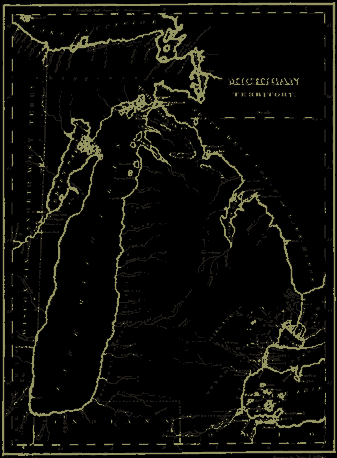 The Revolutionary War did not disrupt the fur trade, although it hampered it to a considerable extent. Part of the difficulty that resulted from this war and the War of 1812 (Americans Vs the British) was the land division that resulted in the Michigan territory.
The Revolutionary War did not disrupt the fur trade, although it hampered it to a considerable extent. Part of the difficulty that resulted from this war and the War of 1812 (Americans Vs the British) was the land division that resulted in the Michigan territory.
By 1822, the counties of Wayne, Oakland, McComb, and Monroe were established.
The rather loosely knit, independent group of trappers, traders, and Indians were beginning to compete with settlers for the available resources. Outside competition in the form of John Jacob Astor and his American Fur Co. continued to the demise of the small independents. Astor brought organizational ability, a keen sense of how to trade with the Indians, and an immeasurable political influence. By 1828, his company controlled 95% of the fur trade in the Northwest Territories, including Michigan. (Shaping a State, 1986)
Toward a More Diversified Economy
Several Factors came together to supersede the predominance of the fur industry in Michigan, especially in Detroit.
For over two centuries, men and women had demanded beaver fur hats and fur trimmed garments. However, silk hats became all the rage in about 1824. Because of their low cost and ready availability, they displaced the fur hat as the mode of fashion. (Bolus, 1972)
At the same time, the supply of fur-bearing animals was becoming exhausted in Michigan, and the incoming settlers were pushing out the Indians and destroying the forests. The era of the fur trade in Detroit had come to an end. (Woodford, 1974)
In 1844, substantial deposits of iron ore were discovered. Between the copper industry and the discovery of iron ore, Michigan became the leading producer of both minerals, and a new industrial era dawned for Detroit. (Woodford, 1969)
TRAPPERS ALLEY
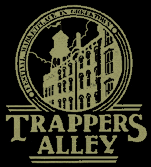 There are not many landmarks in Detroit that give a visual history of the fur industry. This is mainly because most of the fur trading was done right on the street. Trappers Alley is one of the few reminders of the magnitude of the fur industry, even at a time when it was being displaced by other economic considerations.
There are not many landmarks in Detroit that give a visual history of the fur industry. This is mainly because most of the fur trading was done right on the street. Trappers Alley is one of the few reminders of the magnitude of the fur industry, even at a time when it was being displaced by other economic considerations.
The complex of buildings, which is presently Trapper Alley Festival Marketplace, once housed the fur tannery operations of the Traugott Schmidt and Sons Company.
Traugott Schmidt was a German who immigrated to the United States in 1852. He brought with him Germany’s most advanced methods of fur and pelt processing. The complex he built originally consisted of eighteen separate buildings but was lost due to fire. It served as a storage and barn facility, and was located where Delmar’s Grocery now stands.
The first building was built in 1872 and still bears the “T. Schmidt” inscription over the archway of the fourth story window. The office spaces now occupied by the developer were the Schmidt offices over 100 years ago. The offices contain architectural wonders and antiques, including a grandfather clock reported to have been brought over by Schmidt in 1852, the first circular shower, and the first air conditioning unit in Detroit. Traugott Schmidt & Sons became a major trading and manufacturing center, the most active industry at this time. By 1892, the factory was producing 200,000 dressed skins every day. The company diversified to wool and fleece in the 1930’s, producing 1,000,000 pounds annually.
By 1924, the tannery operations ceased, and space was leased commercially. The diversity of the tenants and tenant activities gave the building (now 1010 Beaubien) its color and vitality. Traugott died in 1897, leaving the company to his sons Albert and Edward, and eventually to his son-in-law Arnold Hoffman. On Arnold’s death in 1958, the building was deeded over to his wife and the University of Michigan Board of Regents. The University preserved the complex’s integrity; Hoffman’s foresight saved the Corporation. A group of Detroit professionals acquired the property with plans for a retail/entertainment complex. Unable to complete the project, these professionals left the complex vacant until the city of Detroit approached a Baltimore development group. Cordish Embry & Associates agreed, in 1983, to develop the project.
|
This report was graciously provided by the students and staff of Eastern Michigan University’s Department of Human, Environmental and Consumer Resources.
|
